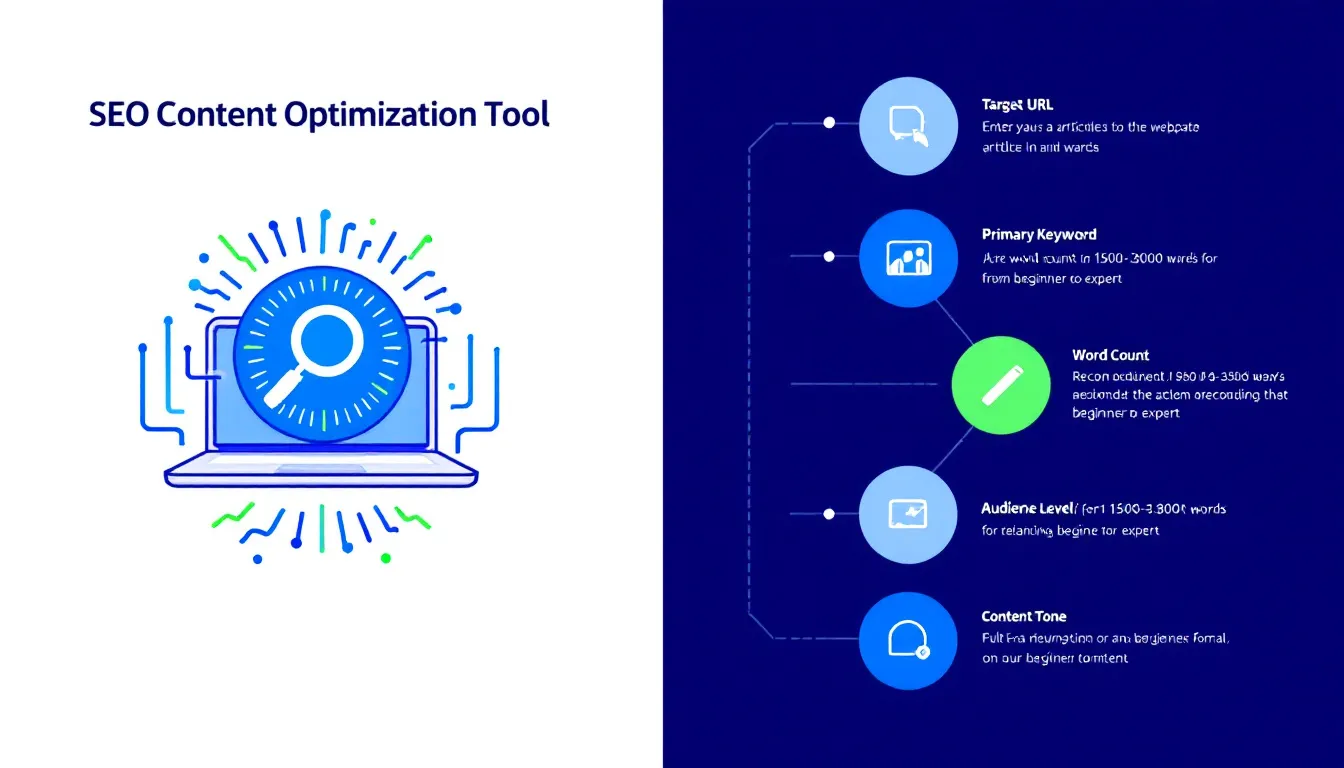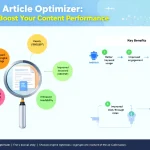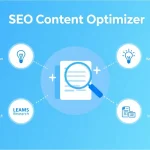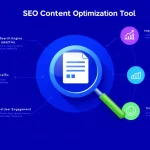SEO Content Optimizer
Is this tool helpful?
How to Use the SEO Content Optimization Tool Effectively
You can create high-performing, search engine optimized articles by following these clear steps:
- Enter Target URL: Provide the full URL of the page you want to outrank, such as https://moz.com/blog/seo-basics or https://neilpatel.com/blog/content-marketing-tips.
- Specify Primary Keyword: Enter the main keyword or phrase you want to rank for, like advanced backlink strategies or local SEO for small businesses.
- Set Word Count Target: Choose a word count between 500 and 5000 words. For example, you might select 1800 words for a focused guide or 3200 for a comprehensive resource.
- Select Audience Expertise Level: Pick from Beginner, Intermediate, Advanced, or Expert to tailor the content complexity to your readers.
- Define Content Tone: Choose a writing style such as Professional, Conversational, Academic, or Technical to match your brand’s voice and your audience’s expectations.
What the SEO Content Optimization Tool Does
This tool helps you create optimized articles designed to outrank competitors on search engines. Using natural language processing and machine learning, it analyzes target URLs to find content gaps, keyword opportunities, and user intent. Then, it generates well-structured, targeted content that aligns with your SEO goals.
Key Benefits
- Save time: Skip manual research and writing; get optimized drafts quickly.
- Improve rankings: Use keyword density and semantic terms optimized for search engines.
- Enhance readability: Produce content that is easy to read and engaging.
- Tailored content: Adjust tone and complexity to fit different audiences and industries.
Practical Use Cases for the SEO Content Optimization Tool
Blog Posts and Educational Content
For bloggers targeting keywords like content marketing trends 2024, the tool analyzes top articles, recommends keyword placements, and suggests headings that cover essential subtopics.
Product Reviews and E-commerce Pages
An online retailer writing about best gaming laptops under $1500 can generate detailed comparisons, features, and benefits that match buyer search intent.
Service Industry Websites
A consulting firm focused on digital transformation strategies can create client-focused content with industry terminology and case studies that build trust and authority.
Understanding SEO Content Optimization With Formulas
To maintain balance and boost search rankings, the tool applies mathematical models like keyword density and readability scores:
Keyword Density Calculation
$$ \text{Keyword Density} = \frac{\text{Number of keyword occurrences}}{\text{Total word count}} \times 100 $$This formula helps keep keyword usage natural and effective, generally targeting 1-2%.
Flesch Reading Ease Score
$$ \text{Reading Ease} = 206.835 – 1.015 \times \frac{\text{Total Words}}{\text{Total Sentences}} – 84.6 \times \frac{\text{Total Syllables}}{\text{Total Words}} $$Higher scores indicate easier reading. The tool adjusts sentence length and word choice to optimize readability for your audience.
How the Tool Solves Content Challenges
Competitive Content Analysis Using TF-IDF
The tool applies term frequency-inverse document frequency (TF-IDF) to find important keywords across competitor pages:
$$ \text{TF-IDF} = \text{TF}(t) \times \log\left(\frac{N}{df_t}\right) $$- TF(t): how often term t appears in a document
- N: total number of documents analyzed
- dft: number of documents containing term t
Content Structure Optimization
The tool recommends headings, subheadings, and paragraph organization to match search engine preferences and improve user engagement.
Maximizing Results With Advanced Features
Semantic Search Integration
It adds related terms and concepts that search engines recognize, improving your content’s relevance and topic coverage.
Mapping User Intent
The tool structures content to address different types of searches such as:
- Informational queries
- Transactional searches
- Navigational requests
- Commercial investigation
Mobile-First Content Design
It ensures the generated content uses clear headings, scannable text blocks, and formatting optimized for mobile devices.
Tips to Get the Most From the SEO Content Optimization Tool
- Research your keyword thoroughly before input.
- Analyze competitor content to understand gaps.
- Choose the audience expertise level that matches your readers.
- Select a writing tone consistent with your brand voice.
- Review the generated content and adjust as needed for accuracy and personalization.
Important Disclaimer
The calculations, results, and content provided by our tools are not guaranteed to be accurate, complete, or reliable. Users are responsible for verifying and interpreting the results. Our content and tools may contain errors, biases, or inconsistencies. Do not enter personal data, sensitive information, or personally identifiable information in our web forms or tools. Such data entry violates our terms of service and may result in unauthorized disclosure to third parties. We reserve the right to save inputs and outputs from our tools for the purposes of error debugging, bias identification, and performance improvement. External companies providing AI models used in our tools may also save and process data in accordance with their own policies. By using our tools, you consent to this data collection and processing. We reserve the right to limit the usage of our tools based on current usability factors.







